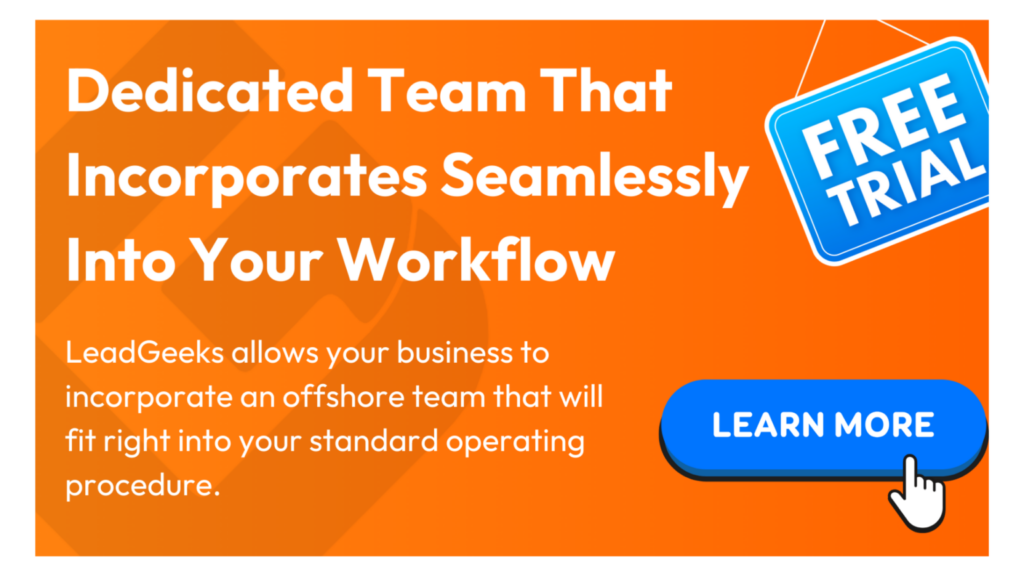In today’s digital age, the success of your marketing campaigns is not just about generating leads; it’s about generating cost-effective leads. Are you spending more to acquire fewer customers? If so, it’s time to turn your focus towards one of the most critical metrics in marketing: Cost Per Lead (CPL). Understanding and optimizing your CPL is not just beneficial; it’s essential for thriving in competitive markets. In this post, we will be diving into CPL and how to effectively navigate around it.
What is Cost Per Lead?
At its core, CPL measures how cost-effective your marketing campaigns are in generating leads. Simply put, it’s the price you pay for each lead generated. While the concept might sound straightforward, its implications are profound. A lower CPL means you can generate more leads for the same amount of money, maximizing your marketing budget’s efficiency.
But why is CPL so crucial for marketers and business owners? For starters, it directly impacts your bottom line. By reducing the cost per lead, you’re essentially enhancing the ROI of your marketing efforts by reducing how much money you spent. Plus, it enables you to allocate your budget more effectively, investing more in the strategies that work and cutting back on those that don’t.
Strategies to Reduce Cost Per Lead
The path to reducing your CPL isn’t exactly rocket science. It’s through tackling them with targeted strategies that attract the right audience at the right time and cost. Here are some tactics to consider:
Targeting the Right Audience
Understanding your audience is the first step in reducing your CPL. Use demographic and psychographic information to target those most likely to be interested in your product or service, thereby increasing the probability of lead conversion.
Best Practices:
- Make use of Data. Look into your CRM, website analytics and social insights to see what characteristics do your best-performing segments have
- Create Buyer Personas. Make complete and detailed personas of the kind of audience you want to target for your campaigns
Enhancing Ad Quality and Landing Pages:
Your ads and landing pages are the first touchpoints for potential leads. Making sure they’re optimized for conversion can significantly lower your CPL. Focus on clear, compelling calls to action (CTAs) and ensure your landing pages provide value.
Best Practices:
- Monitor Performance Metrics. Keep track of metrics that is most relevant to your objectives, like click-through rate and conversion rate to see if there’s any room for improvement
- Ad Rotation and Scheduling. With the amount of ads audience consume on the daily, it is very likely that they will eventually reach ad fatigue; where they become too familiar with your ads to engage. Rotate ads to prevent ad fatigue and schedule them to appear when your target audience is most active instead of continuously post similar content at all times.
Implement Effective Bidding Strategies
Effective bid management is key to reducing CPL in paid advertising campaigns. Consider using automated bidding strategies like CPA (Cost Per Acquisition) targeting. This makes the bidding focus is on converting users at a specific cost that aligns with your marketing budget. Exploring options like manual bidding can give you control to adjust bids in real-time based on the ad performance and conversion data.
Best Practices:
- Understand your Bidding Options. Not all bidding strategies may be relevant to your objectives. Make sure to research and understand the different bidding strategies offered by platforms like Google Ads such as Maximize Clicks, Target CPA, Enhanced CPC
- Test and Adjust Bids. Similar with all strategies, it wouldn’t be wise to go all-in at the start. Test out the waters first in your bidding strategies by starting with a conservative bid, then adjust as you gather more performance data.
- Use Machine Learning Tools. Crunching all the numbers for the best performing bid can be overwhelming. This is where you can take advantage of machine learning and AI tools provided by advertising platforms to optimize bids for the best results.
Produce High-Quality Content
Investing in content marketing can attract leads organically, which usually costs less than paid advertising. Tailor your content to meet your audience’s needs and interests, whether it’s through informative blog posts, engaging videos, or insightful infographics.
Best Practices:
- Provide Value for Audience. A high-quality content is one that keeps them engaged wanting to read more. Make sure that your content is informative, engaging, and provides real value to your audience regarding what your business do and how it positively affects them
- Make Your SEO Effective Having a high-quality content would not matter if they never reach the target audience. Do keyword research and make use of relevant keywords to make your content discoverable in search engines. You can also start by doing a competitor research on a similar business and see what kind of keywords that they are using.
Encourage Referrals
People in general find words from their friends, family or close colleague to be more trustworthy than what they see in ads by itself. Make use of this providing referral programs to incentivize current customers to spread the word about your business. A strong referral can be more cost-effective than many leads generated through other channels and can significantly lower your CPL.
Best Practices:
- Give Incentives. Everyone likes to get something after doing a favor. Offer current customer discounts, redeemable code, a free resource or any other attractive perks that they can get from assisting in the process of referral. You can also add additional perks for the people they refer to so they will be more inclined to take action.
- Make it Easy to Do It’s hard for your current customer to refer with no information to go on for where to direct their friends and acquaintances to your business. Make it easier for them by providing easy to use page that they can just copy the link to.
Do Retargeting Campaigns
Bring back visitors who didn’t convert on their first visit through retargeting campaigns. Since they’ve already shown interest in your brand, retargeting them can more effectively nudge them down the conversion funnel, often at a lower cost.
Best Practices:
- Segment Your Audience. Approaching your retargeting audience in a broad net may not be effective and may even increase your CPL. Look into their previous interactions with your brand and put them into different segments based on how they react to your content
- Personalize Messaging. With your audience segmented, you will have an idea of what kind of content might interest them and nudge them closer to conversion. Draft and tailor the ad content to make it highly relevant to your audience’s previous behavior
- Cap Frequencies of Ads. As mentioned in the previous section, seeing the same ads over and over may lead to ads fatigue and lower engagement. You can set a limit on how often your ads are shown to the same person in platforms like Google Ads in their Display campaign and Video campaign menu
Optimize Your Social Media
Engage with your potential customers on social media platforms where they are most active. Authentic engagement can help attract leads organically, reducing the need for paid lead generation strategies.
Best Practices:
- Choose the Right Platforms. Not everyone is everywhere at the same time. Tackling all social media platforms with ads is also a quick way to an increase in CPL. Instead, look into the platforms that your target audience frequently engage in and focus your efforts there.
- Engage Regularly. Whether it’s industry insights, company updates or your ads, it’s important to regularly post and engage to build your brand image in the community. Post content frequently and engage with responses to build community and foster relationships.
- Make use of Social Listening. Social media is a great place for your target audience to talk about their activities, their interest, and most importantly, their pain points. Keep track and monitor conversations relevant to your business to identify and engage with potential leads. Listing keywords that can be beneficial for content creation is a good start.
Tools for Tracking Cost Per Lead
To effectively reduce your CPL, you must first know how to measure it. Thankfully, several tools can help:
- CRM Software: Tools like Salesforce or HubSpot not only help you manage your leads but also track the costs associated with acquiring them.
- Google Analytics: Google Analytics is a powerful tool for tracking website performance, including conversion rates, which are essential for calculating CPL.
Regularly Reviewing and Adjusting Strategies
The digital marketing landscape is constantly changing, which means what works today might not work tomorrow. That’s why it’s crucial to regularly review and adjust your strategies based on data-driven insights. Keep a close eye on your CPL and other key metrics, and don’t hesitate to pivot your approach if you’re not seeing the desired results.
Lets Lower those Numbers!
Optimizing your cost per lead is not just about reducing expenses. It’s to enhance the overall efficiency and effectiveness of your marketing efforts. By understanding what CPL is, implementing targeted strategies to reduce it, leveraging the right tools for tracking, and being adaptable in your approach, you can significantly improve your marketing ROI. Remember, optimizing your marketing budget doesn’t have to be a daunting task. With the right strategies and tools, you can reduce your CPL and achieve your business goals more efficiently.
Like what you’re reading so far? If you would like to read more content like this we cover topics around B2B Lead Generation every single week in our blog! Click here to read more lead generation strategies!















Leave a Reply